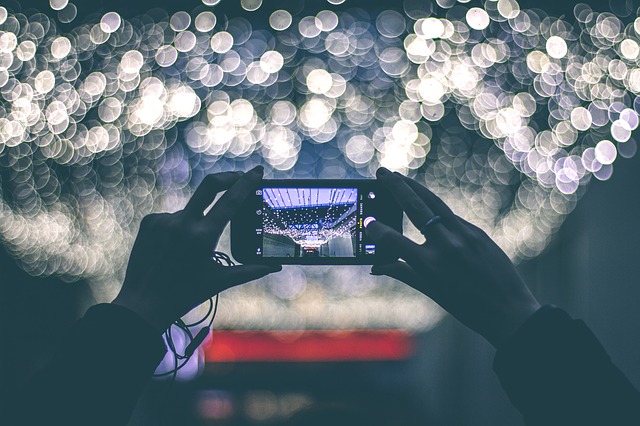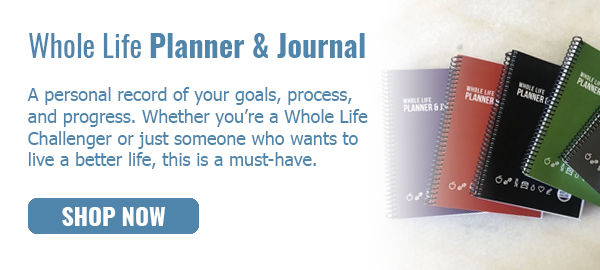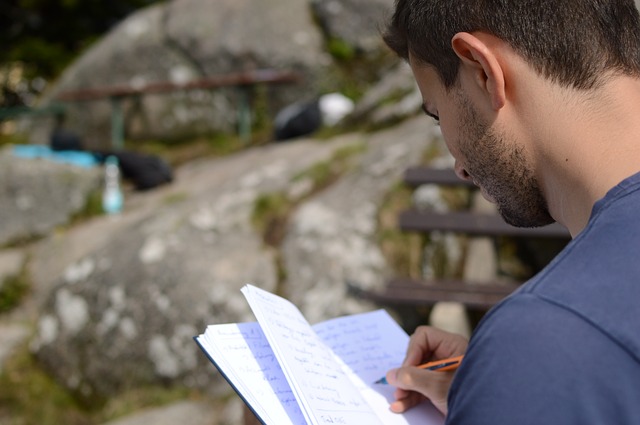 Reading Time: 6 minutes
Reading Time: 6 minutesJournals have been around since pen and paper were invented. Explorers, scientists, and artists have long kept diligent records of their journeys and creations. It’s been said that only by knowing where you are will you get to where you want to go.
And, as it turns out — the same is true for your health, fitness, and wellness journey.
When you undertake an adventure like a healthier lifestyle (and, yes, it is an adventure) it’s a great idea to document your journey. You are creating a new way of perceiving yourself, your health, and the world around you. You are an artist of health, fitness, and happiness. What you experience during this time of change and discovery is important. If you write it down as you go through it, you’ll have access to these memories and revelations for a lifetime.
You don’t have to believe you’re an artist or explorer to get the benefits of journaling. Just be open to the idea that journaling could help you work through unfinished thoughts or half-formed ideas and allow you some space to think. The creativity will take care of itself.
Being an artist is nothing more than persistent work in a chosen field. Like fitness, 80% of it is showing up. So, let’s look at some of the more practical aspects of journaling, and how you can successfully incorporate it into your healthy lifestyle.
What Science Says Your Journal Can Do for You
Simply keeping a record of your confrontations with and triumphs over the dragons and demons that inhabit the unexplored oceans, mountains, and jungles of your psyche can be challenging. The pay-off is undeniable, though.
Studies have shown improvements in areas as such as:
- Functioning of the immune system
- Reduction of disease symptoms, for HIV, rheumatoid arthritis, asthma and others
- Improved memory
- Lower blood pressure
- Stress reduction
- Better sleep
Describing your daily struggles, triumphs, and mediocrities can prove invaluable in figuring out your way along the path to health. And keeping a journal is a low-risk way to improve your health. You really aren’t going to do yourself any harm by journaling (although, I suppose, you could get a paper cut) and you are likely to make some big improvements in your mental function and maybe even your physical health.
So, How Do You Start Your Journal?
It’s kind of like exercising: find what works for you. There are many types of journals you can try. Experiment and remember that you don’t have to stick to just one approach. Find what makes the most sense and feels right for you — and then go with it.
You can go old-school or start an e-journal. The classic journal is like the old-fashioned diary. It can be a super-fancy, leather-covered book or a plain old, black-and-white theme book from the dollar store. Many believe the physical act of writing is just as important as recording your thoughts. The tactile feel of pen on paper and the creation of each letter can be more powerful than banging on a keyboard. But, really, that is an individual thing and I would encourage you to try old-fashioned and modern-day journals to find the method that you will do on a regular basis.
And that’s because being consistent in making entries every day is key to success. That is where embracing modern technology while building your journaling habit can be helpful. You almost always have your phone or tablet with you, right? For most of us, technology has become part of our daily wardrobe and that makes an electronic journal convenient. The abundance of available journaling apps makes the practice even more convenient.
Now, What Do You Write About?
Well, nothing and everything is a starting point. In fact, you don’t have to write at all. There are many ways to journal and writing words is just one possibility. Here are three ideas for a journal that you may not have thought about before:
1. Photo Journal
If you are a visual person, you can keep a photo journal. Think of it as your own personal Instagram account. But there’s no pressure to share what you snap a pic of or to compete with someone else whose life is too amazing to believe (because, guess what, that life is not real.) Be honest and find beauty in the ordinary as well as the extraordinary.
In Japan, they have a concept called wabi sabi, which basically means finding beauty in the imperfect and broken. Keep that in mind as you build your photo journal. Your life is not perfect, nor should you strive to make it so. Your journal reflects your true life — not what you think it “should” be.

2. Gratitude Journal
This is just what it sounds like — write or take photos of things for which you are grateful. It’s amazing how much paying attention to the things that bring us joy can make all the other less pleasant stuff fade away. Most of us get caught up in the now and forget how beautiful life is.
A gratitude journal is just the reminder we need, especially on those days we are not feeling so great about ourselves. No matter how dire the circumstances there is always something to be grateful for: a loving spouse, a snuggly dog, a hot cup of coffee, finding the one pair of socks without holes. It doesn’t matter how big or small, expressing gratitude will make you feel better about yourself, life, and the world in no time.
3. Idea Journal
You know all those ideas that pop up, but you lose them before you write them down? There’s no excuse anymore. With smartphone note-taking apps you can capture text, a photo, or a voice memo just about anywhere. Combine all three and guess what? You are making art.
Seriously, art is not reserved for the elite or the boho chic. It’s for all of us and it fulfills us as humans when we create our art every day. (P.S. nobody’s “art” will be the same and that’s what’s really cool about it. Remember wabi sabi.)
A Key Point About Journaling: You Never Have to Share
You should approach your journaling practice with the thought that you will never share your creations. You will create with honesty, candor, and a depth of thought that won’t be there if you think the world, your family, or even the neighborhood may observe your entries.
And that vulnerable place is where truth and art come from. What you create with the intention of sharing will be different than what you create just for yourself. As soon as you invite that editor to the table, then you lose a little of the sparkle, depth, and meaning of what you are creating. So share if you want later — but start from a private place.
What Will Your Journal Look Like?
There really is no downside to journaling unless you truly want to live an unexamined life. And even if that’s what you think, it’s probably because you haven’t tried mining your own depths.
Keep journaling simple. In truth, all you have to do is open your notebook or e-notebook and go at it. Start as small as you need: just a couple of sentences. Before long, you’ll be creating paragraphs, then pages. Soon enough it will become one of your favorite practices.
Journaling is a great way to take a break from your thinky brain and let your creative side take over — and that’s important. You have a lot to say even if you choose to say it with photos or daily drawings or the written word or a mix of words and images. The more you let your inner creator out the, healthier you will be — and more importantly, the happier you will be.











